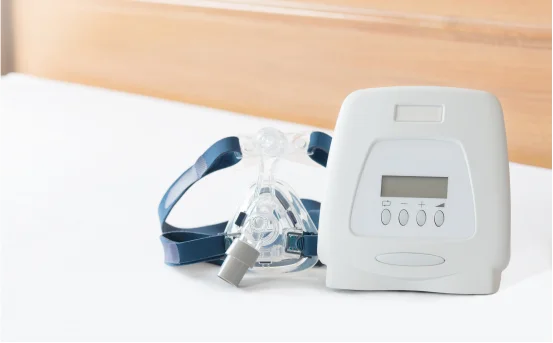Antrectomy surgery is a specific type of gastric surgery performed to treat various stomach disorders, most commonly related to ulcers and tumors. The term “antrectomy” refers to the surgical removal of the antrum, the lower portion of the stomach responsible for producing a significant amount of gastric acid. Understanding this procedure, when it is necessary, and what to expect before and after surgery can help patients make informed decisions about their healthcare journey.
Although antrectomy is not as commonly performed as it once was thanks to advancements in medications for ulcer treatment it still remains a critical surgical option for patients who do not respond to conventional therapies. It can be life saving in cases involving cancer or severe gastrointestinal complications.
What is Antrectomy Surgery?
Antrectomy is a surgical procedure that involves the removal of the antrum of the stomach. This surgery is often performed to treat conditions such as peptic ulcer disease, gastric cancer, or severe inflammation not responding to medication. By removing the antrum, doctors can reduce acid production and relieve symptoms associated with stomach irritation or malignancy.
The procedure is sometimes combined with other types of gastric surgeries such as vagotomy (cutting the vagus nerve to reduce acid secretion) or Billroth I and II reconstructions, which help reestablish the gastrointestinal tract after antrectomy.
Indications for Antrectomy Surgery
Antrectomy is not a first line treatment. It is usually recommended when conservative measures such as medications or dietary changes fail to manage a patient’s condition. Some of the most common indications for antrectomy include:
-
Chronic peptic ulcers that are non responsive to treatment or complicated by bleeding or perforation.
-
Gastric outlet obstruction, a condition where the passage of food from the stomach to the intestine is blocked.
-
Benign or malignant tumors located in the antral region.
-
Zollinger Ellison syndrome, a rare condition involving gastrin-secreting tumors that cause excessive acid production.
-
Recurrent gastric ulcers, often due to long term NSAID use or H. pylori infection.
Types of Antrectomy Procedures
There are primarily two types of antrectomy surgeries based on how the digestive tract is reconstructed after the antrum is removed :-
- Billroth I (Gastroduodenostomy) :- In this method, the remaining portion of the stomach is directly connected to the duodenum. It maintains a more natural digestive pathway and is usually preferred when the surrounding tissues are healthy enough to support the connection.
- Billroth II (Gastrojejunostomy) :- Here, the stomach is connected to the jejunum (part of the small intestine) instead of the duodenum. This approach is considered when the duodenum is damaged or inflamed and cannot be used for reconnection.
The choice of technique depends on the patient’s condition, surgical history, and the surgeon’s preference.
How the Antrectomy Procedure is Performed?
Antrectomy can be done using traditional open surgery or minimally invasive laparoscopic techniques. Laparoscopic antrectomy has become more common in recent years due to quicker recovery times, smaller incisions, and reduced hospital stays.
Surgical Steps :-
-
The patient is placed under general anesthesia.
-
The surgeon makes small incisions (laparoscopic) or a larger abdominal incision (open surgery).
-
The antrum portion of the stomach is carefully dissected and removed.
-
The remaining stomach is reconnected to the digestive tract using either the Billroth I or II method.
-
The surgical area is closed, and the patient is monitored in recovery.
The entire procedure usually takes a few hours, depending on the complexity and method used.
Recovery After Antrectomy
The recovery period varies based on the patient’s overall health, the type of surgery performed, and whether any complications arise.
- Hospital Stay :- Most patients stay in the hospital for 5–7 days following surgery. Pain management, intravenous fluids, and nutritional support are provided during the initial recovery phase.
- Diet and Nutrition :- After surgery, the patient will be gradually transitioned from a liquid diet to soft foods and eventually to regular meals. Smaller, more frequent meals are typically recommended to accommodate the reduced stomach size and prevent dumping syndrome, a condition where food moves too quickly into the small intestine.
- Physical Activity :- Light activity is encouraged soon after surgery to promote circulation and prevent blood clots. Full recovery may take several weeks, during which time patients are advised to avoid strenuous activity and follow all medical advice.
Risks and Complications of Antrectomy
As with any major surgical procedure, antrectomy carries certain risks. Some of the potential complications include :-
-
Infection at the surgical site
-
Bleeding
-
Anastomotic leak, where the connection between the stomach and intestine leaks digestive fluids
-
Dumping syndrome, leading to nausea, vomiting, or diarrhea after meals
-
Nutritional deficiencies, particularly of iron, calcium, and vitamin B12
-
Delayed gastric emptying
These complications are relatively rare when the surgery is performed by experienced gastrointestinal surgeons, and most can be managed effectively with medical support.
Long Term Outlook After Antrectomy
Many patients experience significant relief from their symptoms after an antrectomy. Peptic ulcer patients often find complete resolution of ulcer related pain, while cancer patients may benefit from complete tumor removal when caught early.
However, long term follow up is essential to monitor nutritional health and ensure that the digestive system continues to function properly. Periodic blood tests, nutritional assessments, and consultations with a dietitian may be required to manage diet and supplementation.
Conclusion
Antrectomy surgery is a valuable treatment option for patients with persistent gastric issues such as ulcers, tumors, or gastric outlet obstruction. While it is a significant procedure, advances in surgical techniques and post operative care have made it safer and more effective than ever before.























